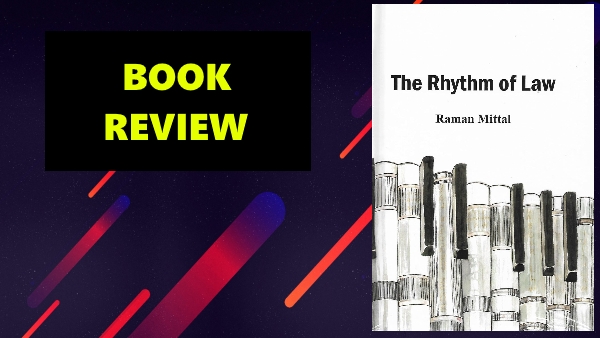Context:
Federalism is derived from the Latin word foedus, which means agreement. So, the federation is an agreement between two types of governments sharing power and controlling their respective spheres, which are combined under common sovereignty with both national and federating units having autonomous spheres assigned to them by the constitution.
- Indian Constitution has a quasi-federal structure (a term coined by KC Wheare) from the time when it was drafted. Word ‘federal’ is not mentioned in the constitution, but the working of Indian democracy is essentially federal in structure. We can say that our Constitution has little Unitary bias, because of the concept of cooperative federalism and competitive federalism in India comes into the picture.
- The present government is stressing on the need to leverage the potential of cooperative and competitive federalism for achieving all-round inclusive development in India. In this context, there is a need to examine the concepts of cooperative and competitive federalism.
Cooperative vs Competitive Federalism
Based on the relationship between the central and state government–the concept of federalism is divided into Cooperative federalism and Competitive federalism.
- In Cooperative federalism, the Centre and states share a horizontal relationship, where they “cooperate” in the larger public interest.
- It is an important tool to enable state participation in the formulation and implementation of national policies.
- Union and the states are constitutionally obliged to cooperate with each other on the matters specified in Schedule VII of the constitution.
- In Competitive federalism, the relationship between the Central and state governments is vertical and between state governments is horizontal.
- This idea of competitive federalism gained significance in India post-1990s economic reforms.
- In a free-market economy, the endowments of states, available resource base, and their comparative advantages all foster a spirit of competition. Increasing globalization, however, increased the existing inequalities and imbalances between states.
- In Competitive, federalism States need to compete among themselves and also with the Centre for benefits.
- States compete to attract funds and investment, which facilitates efficiency in administration and enhances developmental activities.
- The investors prefer more developed states to invest their money. The Union government devolves funds to the states based on the usage of previously allocated funds.
- The healthy competition strives to improve physical and social infrastructure within the state.
- Competitive federalism is not part of the basic structure of the Indian constitution. It is the decision of executives.
Constitutional Position
- Article 1 of the Constitution states, “India, that is Bharat, shall be a Union of States”. While the Constitution doesn’t mention the term “federal”, it provides for a governance structure primarily federal.
- It provides for separate governments at the Union and in the states. Further, it specifies and demarcates the powers, functions, and jurisdictions of the two governments. Last, it details the legislative, administrative, and financial relations between the Union and the states.
- They have divided the distribution of legislative powers into three lists: the Union List, the State List, and the Concurrent List. The Union List, comprising the “vital interests of the State”, is the longest.’
- On the Union List, Parliament has exclusive powers to legislate. While the state has exclusive powers to legislate on the State List, in certain situations, Parliament can also do so.
- As per the Concurrent List, the issue is more complex.
- In case of a conflict between a state and Central legislation, the parliamentary legislation shall prevail.
- This, coupled with the fact that the residuary powers of legislation are vested in the Union, gives a “unitary” tilt to federalism in India.
- We have observed a disconcerting trend since 1950. While the Union and Concurrent Lists have expanded, the State List seems to have shrunk. This has led many to question the structure of Indian federalism and to propose its remodeling.
Steps toward Competitive Federalism
- The acceptance of the 14th Finance Commission’s recommendations, apart from enhanced devolution (devolution of 42% of the divisible pool to states during 20015-16 to 2019-20, against 32% suggested by the previous commission), enables states to design and implement programs better suited to their needs.
- All did not yet embrace competitive federalism among the states. But a handful of states are taking steps to strengthen their business environments, including starting difficult reforms on land acquisition and labor flexibility.
- Federalism is no longer the fault line of Centre-State relations but the definition of a new partnership of team India.
- The Central government has promised decentralization of power and minimum interference in State affairs.
- With the rollout of the GST, this federal structure is further cemented.
- The government has abolished Planning Commission and replaced it with NITI Aayog. One mandate of the NITI Aayog is to develop competitive federalism. Under it;
- State governments would not look towards the centre for policy guidelines and fiscal resources.
- It has increased share of states in central tax revenue from 32% to 42% after the recommendation of the finance commission.
- States have the freedom to plan their expenditure based on their own priorities.
- States would work with centre on a shared vision of national objectives.
- Restructuring of centrally sponsored schemes.
- Financial sector bailout program under the UDAY scheme.
- Swachh Bharat Ranking system.
- Most of the state now organizes investors meet to showcase facilities in their state to attract business and investment. This has led to an improvement in the business environment in various states.
- State-wise Ease of Doing Business ranking to build an enormous sense of competition.
Role of NITI Aayog in Promoting Co-Operative, Competitive Federalism
In 2017, the Niti Aayog called out for competitive “cooperative federalism” stressing that this formula would redefine the relationship between the Centre and the States.
Former vice-chairman of Niti Aayog Arvind Panagariya put the onus on the States to reimagine brand India.
Chief secretaries of states in one meeting even showcased the best practices being incorporated in their respective states, a move aimed at promoting cross-fertilization of ideas.
There appears to be a silver lining in the functioning of the Aayog in enabling states competing to promote governance initiatives in the spirit of “Co-operative, competitive federalism”.
An important aim of NITI Aayog is to establish a dynamic institutional mechanism where ‘eminent individuals outside the government system’ could contribute to policymaking.
The priorities for the Aayog are clear with the suggestions for rationalization of 66 central schemes on skill development and making Clean India a continuous program leading to the formation of three CM sub-committees.
In a subtle manner, NITI Aayog not only puts the onus on Chief Minister to hasten the implementation of projects for the betterment of the state but also makes the state an attractive investment destination–a kind of competitive federalism.
Given the greater scope for states to work together and learn from each other, for federalism to work well, these states must also fulfill their role in promoting the shared national objectives.
India cannot advance without all its states advancing in tandem, but it may so happen that by not granting the statutory status for the NITI Aayog, the government has made it vulnerable to future ambush under a different political dispensation.
Hindrances to Competitive federalism
- Several issues, such as trust deficit and shrinkage of divisible pools, plague Centre-State relations. Together, they make total cooperation difficult.
- The trust deficit between the Centre and states is widening. Most state governments believe it limited the thrust on federalism to lofty ideas and big talks. The many States have shown their displeasure with the way the Centre has been dealing with the States.
- On one hand, the Centre has increased the States’ share of the divisible pool, but in reality, States are getting a lesser share. The allocation of various social welfare schemes has also come down, affecting the States’ health.
- The present inter-state competition in attracting investment is too early to determine whether it will really encourage competitive patterns of investment continuously.
- The socio-economic parameters and development of each State in India is different and while a few have made substantial progress in terms of employment, literacy, and creating a conducive environment for doing business and investments, there are a few which are lagging.
- There are varied economic patterns in different states. There are deficit states or the backward regions or the states under debt. Those states should not be treated on par with the well-off states.
- The states like West Bengal, Bihar, Orissa, and Assam have protested against the uniform approach in funding because of their special situations in which the central government has to provide special funds for these states. Without special funding, these states cannot imagine their participation in competitive federalism.
- Though the states are provided with financial independence, it is a fallacy to assume that all the states would perform uniformly in the process of development because while some states have favorable factors like skilled labor, capital, and infrastructure, innovative service industries other states lagging.
- The opposition of a few well-off states regarding revenue loss in implementation of GST system points that there is a lack of will in participating in the process of competitive federalism.
Suggestions
- Efforts at cooperative and competitive federalism have begun but need to be strengthened.
- NITI Aayog concentrates on the broader policy framework instead of micro resource-allocated functions. So there is a need to take some further steps.
- Reactivation of the Centre-State Council: Under Article 263, this council is expected to inquire and advise on disputes, discuss subjects common to all states, and make recommendations for better policy coordination.
- The NITI Aayog can’t replace the council’s functions as it is the only recognized constitutional entity for harmonizing the actions of the Centre and states. Its effective utilization would lend legitimacy to cooperative federalism.
- On contentious issues like land, labor, and natural resources, the state should promote best practices.
- This will enable greater investment and economic activity in states with a favorable regulatory framework. The enactment by states must secure expeditious Central approval.
- The World Bank’s Ease of Doing Business index reflected competition between states has generated interest. This must be a continuing exercise.
- But states not doing well on the index complain of infirmities of process and procedure. These need to be made more acceptable and transparent.
- On issues like international treaties, WTO obligations, or the environment, it must evolve an institutional mechanism where important decisions are appropriately discussed with states.
- As India becomes globally more interdependent, these potential contentious issues must be resolved.
India needs a mix of competitive and cooperative federalism
- There needs to be a mix of competitive and cooperative federalism for India to move ahead.
- The future of India is cooperative and competitive federalism. Competitive federalism provides the dynamism that needs to be unleashed.
- We need cooperative federalism to balance competitive federalism.
- Constitution needed to catch up with economics to “favour integration over granting sovereignty” to promote Indian internal integration.
- GST which seeks to introduce the concept of one nation-one tax, in order to economically unify the country for the first time, is described this as “pooled sovereignty”, which would bring a big change in the working of federalism in the country.
Way Forward
- Cooperative and competitive federalism are not mutually exclusive. They have the same basic principle underlying, i.e. development of the nation.
- Cooperative and competitive federalism may be two sides of the same coin, as the competition alone cannot give the best results. It is competition with the cooperation that will drive the genuine change.
- Some states would require the center’s support to take part in competitive federalism. Powerful states make a powerful nation and to realize this vision, it requires a “Team India” approach to work for India’s development.
- The passage of the GST Bill does usher in a new era in cooperative fiscal federalism and a growing political consensus for economic reforms.
- Further, the government’s structural reforms, particularly for land and labor, are now widely seen as necessary for realizing the potential of the economy.
- While all policy-makers and economists believe that “true” cooperative federalism is the way forward, they underline the need for the Centre to include states more aggressively in the decision-making process.
- Most state finance ministers also feel that the Centre’s fund allocation to states must be done more judiciously.
Check out our work on >>> Indian Constitution
Check out our YouTube Channel for some good legal content >>> LAW PLANET






